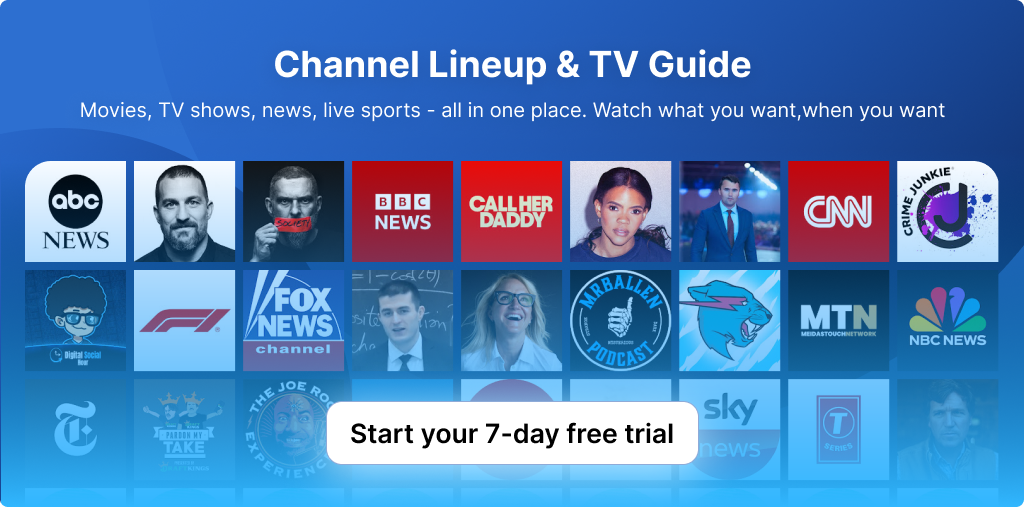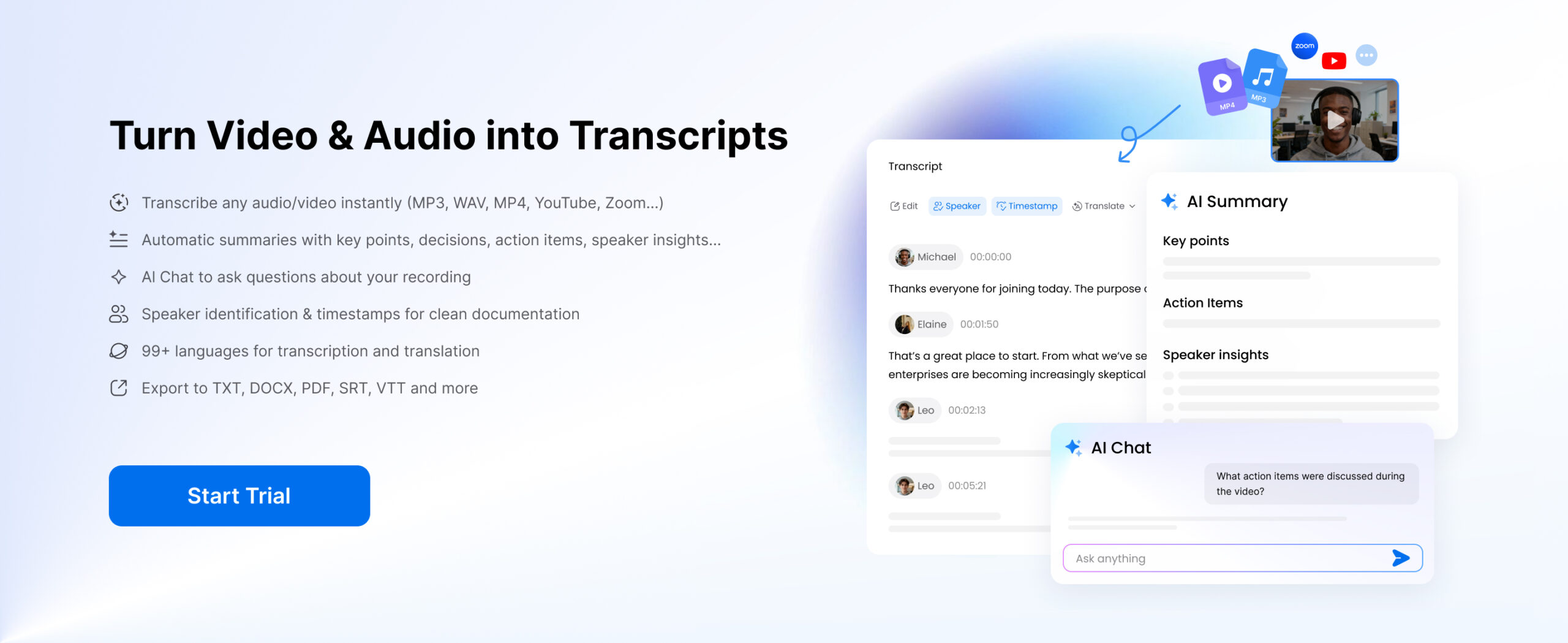With over 5 million podcasts and counting, standing out isn’t easy. You’ve probably worked hard on your content, your delivery, and your branding—yet growing your audience remains a challenge.
Here’s the thing most podcasters overlook: transcripts. A simple text version of your episode might just be the tool to amplify your reach, boost discoverability, and make your content work harder for you.
Let’s break down what podcast transcription is—and why it matters more than ever.
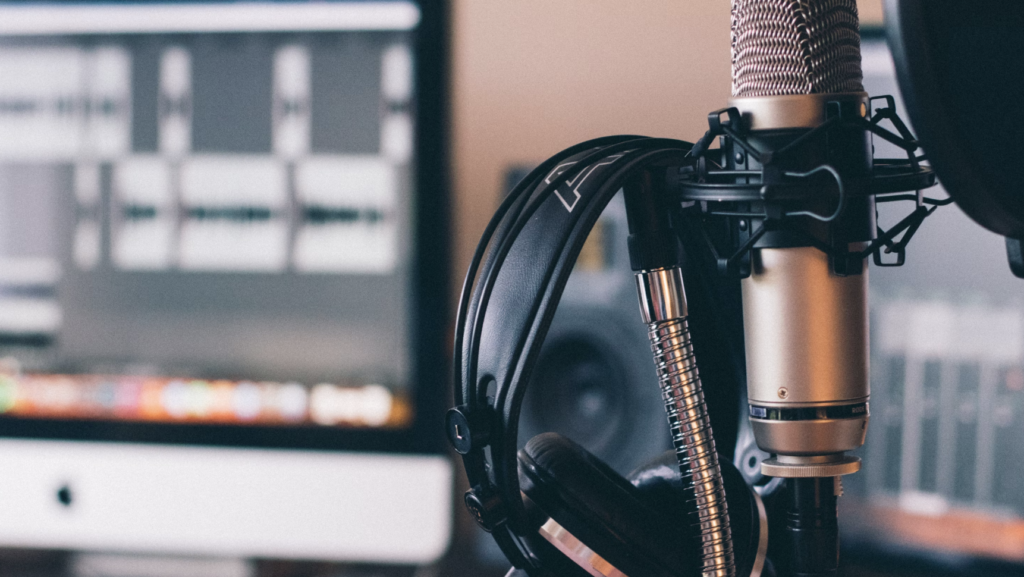
What Is Podcast Transcription?
A podcast transcript is the written version of your episode’s audio. Think of it as a readable layer for your audio content, one that search engines can index, repurposed into new formats, and made accessible to more listeners.
A good transcript typically includes:
- Speaker labels to clarify who’s talking.
- Timestamps to help readers jump to specific parts of the audio.
Accurate text that reflects the tone and nuance of the conversation. - Notations for important sounds, pauses, or music cues.
Whether you’re just starting or scaling your show, transcription sets the stage for discoverability, accessibility, and long-term growth.
Why Podcast Transcripts Amplify Your Reach
Transcripts are more than just words on a page, they’re a strategic tool that opens up new opportunities for growth, visibility, and connection. Here’s how scripts supercharge your podcast’s reach and impact:
Improved Accessibility and Inclusion
Not everyone can or wants to listen to a podcast. Over 430 million people worldwide live with disabling hearing loss. Without podcast written versions, this entire audience is left out. But it doesn’t stop there. Think about commuters in noisy environments, office workers without headphones, or non-native English speakers who find it easier to read than listen.
By adding an audio script, you eliminate these barriers and make your content available to people who otherwise wouldn’t have access. It’s a small step with a huge impact on inclusivity, making your podcast truly welcoming to all.
SEO Boost and Discoverability
Most podcast platforms don’t allow Google to crawl your audio. That means without an audio script, your episode is essentially invisible to search engines. With a transcript, though, you’re turning your podcast into thousands of searchable words. Instead of a blank page, Google sees content it can rank, allowing new listeners to discover your show through organic search.
Real-world results prove this works – Moz reported a 50% lift in keyword rankings after using transcripts to enrich their content.
Transcribing a podcast also helps with:
- Targeting long-tail keywords naturally spoken during your show.
- Earning backlinks when people quote or reference your transcript.
- Boosting YouTube SEO when used as captions or in the description.
In short, turning your podcast to text helps search engines find you and helps new listeners find value in your content.
Enhanced User Experience & Engagement
Not everyone has 60 minutes to spare, but many still want your insights.
Transcripts let users skim, search, and consume your content at their own pace. Whether they’re looking for a specific quote, scanning for a topic, or reading along as they listen, transcripts make it easy.
They also improve retention. Some users absorb information better when reading, while others use transcripts to revisit key ideas later. And when it’s easier to navigate your episodes, people stay longer and return more often.
Better engagement leads to higher listener loyalty, which means more shares, reviews, and growth.
Content Repurposing Superpower
One podcast episode can fuel an entire content calendar—if you have a transcript.
With a podcast transcript generator, you can effortlessly spin your audio into:
- Blog posts (turn conversations into articles)
- Social media content (quote insights, create audiograms)
- Email newsletters (add highlights or summaries)
Show notes and episode summaries - Multi-language translations to reach international audiences
You save time by reusing what’s already been said; no need to write from scratch. This means faster content creation and broader reach across platforms and formats.
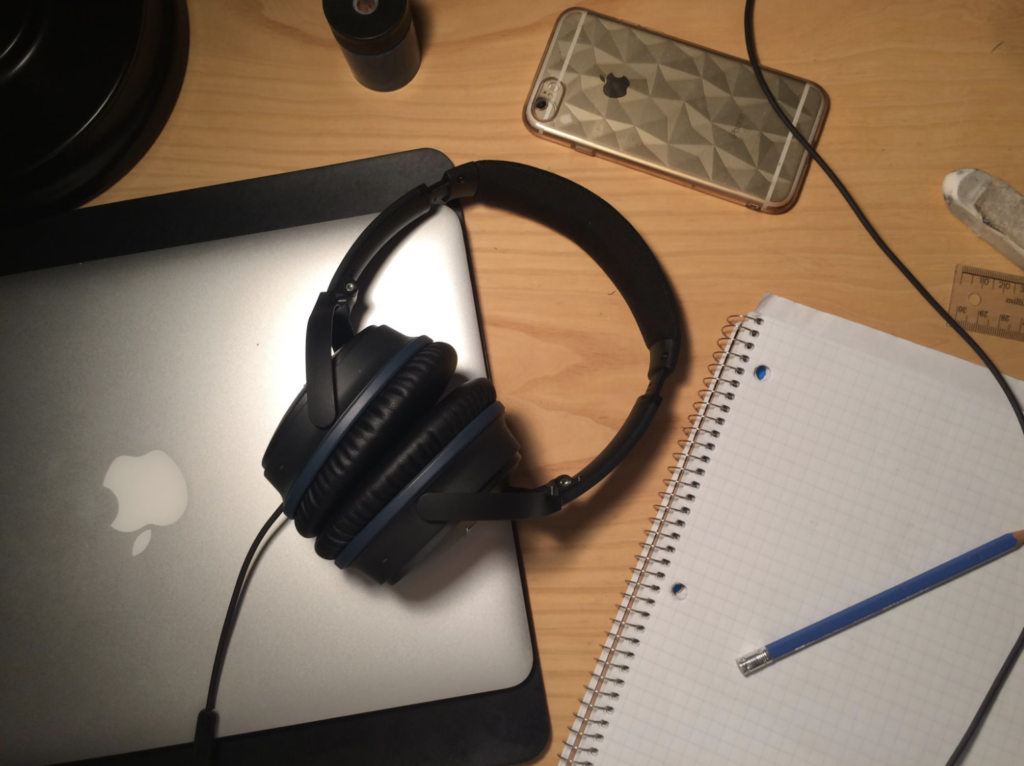
Shareability and Virality
Transcripts make your content easier to quote, and quotes are what spread.
With a transcript, you and your listeners can copy and share compelling moments without misquoting. Whether it’s a powerful line for LinkedIn or a soundbite for Twitter, text fuels shareability. Journalists or bloggers are more likely to feature your podcast if they quickly pull a relevant quote. That means more mentions, backlinks, and word-of-mouth exposure, all thanks to having your ideas in writing.
In today’s attention economy, going viral starts with being shareable, and transcripts make it seamless.
Making the Most of Your Podcast Transcription
Transcripts unlock serious potential, but only if you use them strategically. Too many podcasters stop at just uploading a raw text file. To truly amplify your reach and impact, treat your transcript like any other content asset: optimize it, format it, and make it work for you.
Embed on Your Site
Make your transcript easy to find and read by embedding it directly on your podcast episode page or linking to a separate transcript page. For platforms that limit show notes (like Spotify or Apple Podcasts), include a short note:
👉 “Full transcript available at [yourwebsite.com]”
Bonus tip: Offer a downloadable PDF version for accessibility and offline reading. This also makes it easier for media or collaborators to cite you.
Format for Readability
No one wants to scroll through a wall of text.
Break your transcript into short paragraphs, add speaker labels, and include timestamps, ideally clickable, to help readers jump to key parts of the episode.
Clean formatting:
- Keeps users engaged
- Makes it easier to scan and search
- Gives your content a polished, professional feel
Clean formatting becomes even more essential if your podcast is rich in back-and-forth dialogue.
Highlight Key Info
Help readers (and Google) find the gold. Use bold text, block quotes, or even colored highlights to draw attention to:
- Big takeaways
- Powerful quotes
- Actionable tips or frameworks
This helps busy visitors skim the text and still get value, while giving you ready-made social media content.
Include Links and CTAs
Link to any resources, websites, tools, or names mentioned in the episode. This not only provides value to readers but also enhances your SEO through relevant outbound links.
Don’t forget to add a call-to-action at the end of the transcript:
“Enjoyed this episode? Subscribe to our newsletter for more insights like this every week.”
This simple step turns transcript readers into engaged subscribers or followers, and keeps the conversation going.
A transcript isn’t just a behind-the-scenes extra. When formatted, published, and optimized well, it becomes an evergreen asset that boosts search rankings, drives engagement, and powers your entire content strategy.

How to Get Your Podcasts Transcribed
By now, it’s clear: transcripts can transform your podcast’s reach. But how do you actually get one?
There are three main ways to transcribe your episodes, each with its trade-offs.
1. AI-powered Transcription Tool
If you’re looking for a fast and budget-friendly way to turn your audio to text, Clipto.ai makes it effortless.
Powered by advanced speech recognition, Clipto.ai converts your audio or video into text within minutes, so you can focus on creating, not typing.
Why podcasters love Clipto.ai:
- Fast turnaround – Get your transcript almost instantly
- Cost-effective – Ideal for creators who need a scalable solution
- Easy to edit and export – Fine-tune the text right from your dashboard
Like any AI-based tool, light editing may be needed, especially if your podcast audio includes strong accents, technical terms, or multiple overlapping speakers. But for most users, Clipto.ai perfectly balances speed, accuracy, and ease of use.
Whether you’re just starting or publishing content regularly, Clipto.ai helps you move fast, without compromising quality.
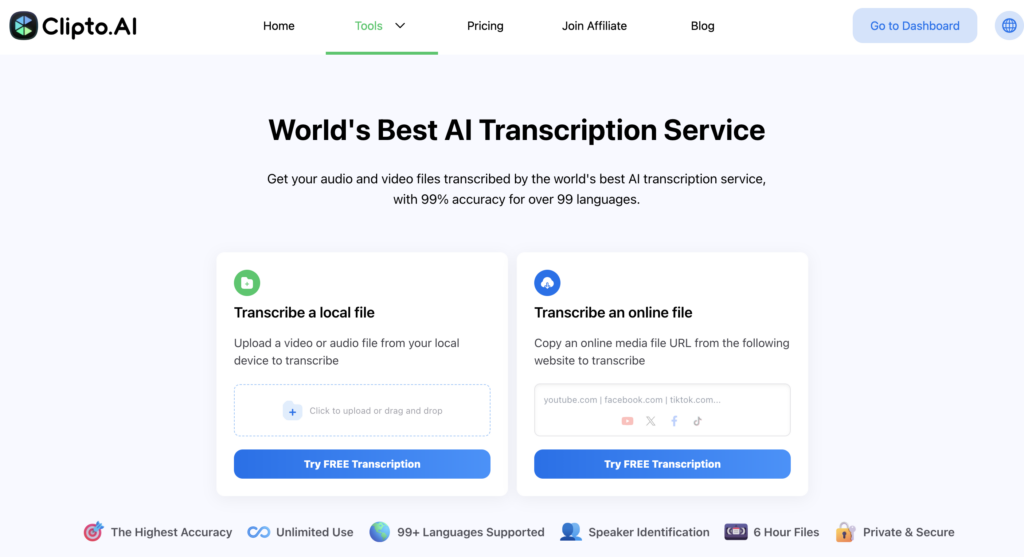
2. Human/Professional Transcribers
For the highest accuracy and polish, you can hire a professional transcriptionist or use a human-based transcription service.
Pros:
- Highly accurate
- Usually includes formatting (speaker labels, timestamps, etc.
Cons:
- More expensive — often $1–$2 per audio minute
- Longer turnaround time than automated tools
If you’re producing high-profile episodes, interviews, or need transcripts ready for publication with minimal editing, this option is worth the investment.
3. DIY Transcription
Yes, you can do it yourself or delegate it to a team member. But be warned: it’s a time-consuming task. Transcribing an hour of audio can take 4+ hours, depending on your typing speed and audio clarity.
Best for:
- Podcasters on a tight budget
- Episodes with low complexity or short runtimes
- Creators who want total control over wording and accuracy
If you’re only producing an occasional episode or want to deeply engage with your content, this route can work—but it doesn’t scale well.
Choosing What Works for You
There’s no one-size-fits-all solution. The best method depends on your budget, time, and how perfect you need the final transcript.
The good news? Transcribing your podcast is more accessible than ever. You don’t need special skills or tools—just a plan that fits your workflow.
Wrap up:
In a crowded podcast space, transcripts give your show new life beyond the ears—they invite search engines to notice you, allow fans to engage on their terms, and ensure no listener is left behind.
By embracing transcripts, you’re not just transcribing words, you’re amplifying your voice to reach farther and resonate deeper. It’s a small step with massive potential. Start now, and let your podcast speak volumes on every platform, to every audience.
